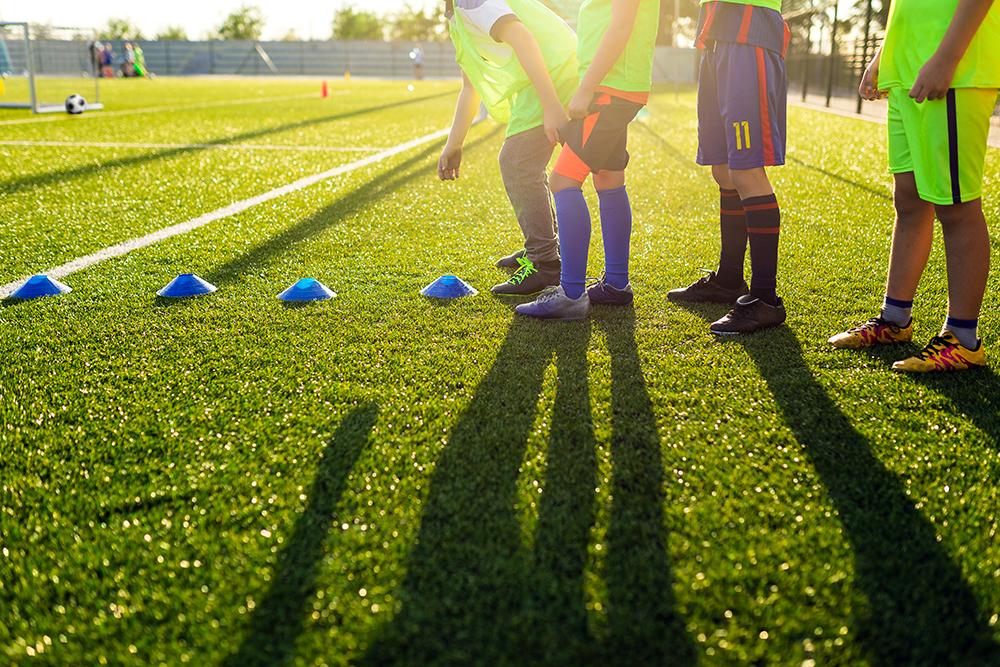 Young athletes with big dreams of sport success are often quick to set large goals.
Young athletes with big dreams of sport success are often quick to set large goals.
However, these goals sometimes fall well outside the bounds of being SMART goals – Specific, Measurable, Attainable, Realistic, and Timely. This could lead to more frustration than progress, or even end up harming others.
Help your athletes avoid goal abandonment by being on the lookout for these four common pitfalls with your youth athletes.
1. Outcome-Based Goals
Examples: Go undefeated; never allow a goal against; win by a margin of X every game
While everyone wants to win, having just ‘win’ as a goal can be somewhat misguided. There are too many variables in sports that put the result directly out of a single athlete’s control: the other players on the field or court, the coach’s strategy or tactics, and even the weather. When these things conspire against an athlete’s singularly-focused goal of ‘just win,’ it can lead to feelings of failure, even for an athlete who played a great game.
Instead, athletes should focus on smaller, measurable goals that the athlete has control over and that allow them to contribute to winning. A goal of ‘make 60% of my shots on the year’ is good, but deconstructing that to ‘Take 50 shots from all around the floor after every practice’ may be more productive for young athletes.
2. Extrinsic Goals
Examples: Make varsity so I will be popular in school; make my family proud; win league MVP
Like outcome-based goals, extrinsic goals are ones unrelated to controllable behaviors. Often, they are aimed at achieving some vague and immeasurable goal such as peer acceptance, popularity, or winning a subjective award.
These goals aren’t SMART, and research has shown extrinsic goals lead to negative actions and make athletes more “likely to ignore their needs and to engage in activities which work against their health and well-being” (Shmuck, Kasser, & Ryan 1999). If an athlete tries to set goals of this nature, try reorienting them toward the measurable steps that helped others achieve those awards and extrinsic goals.
3. Unrealistic Goals
Examples: Shoot 500 free throws after every practice; work out three hours every day; make 100 of my shots
There’s nothing wrong with dreaming big, but if an athlete’s goals are too unrealistic, then it’s a recipe for burnout and disappointment. Many youth athletes have a more equals more mindset, believing that they have to put in an extraordinary amount of time or effort to achieve their goals. This can often lead to a higher risk of injury, practicing and training so long it’s counterproductive, and sacrifices in areas like school. And ultimately, it causes the athlete to abandon their goal.
This is where the ‘R’ for Realistic comes in from setting SMART goals. Athletes should think of success as a series of steps, where each level must be ‘cleared’ before moving up to the next one. For instance, an athlete with a goal of having a double-bodyweight bench press should focus on slowly adding 2-5 pounds to their last set every few weeks instead of lifting to failure every time they go to the gym.
4. Goals That Harm
Examples: Sack the quarterback so hard he must leave the game; beat our rivals 70-0; show up the other team after scoring
Goals should never come at the expense of another player’s safety or the rules of the game. While not setting goals to intentionally injure or ‘take out’ another player would hopefully be a no-brainer, setting goals aimed simply at seeing someone else lose are also unhealthy. These types of harmful goals are often against league rules and some of these – especially taunting or intent to injure – can come with big consequences for the athlete.
Similarly, goals that harm the team in some way should not be set nor pursued. A goal of taking 25 shots every basketball game wouldn’t be a sound goal, as it would likely mean missing out on opportunities to pass to teammates in a better position to score.
If it seems like your athlete is setting goals of this nature, refocus them toward a goal that is healthy, within their control, and helps the team.



